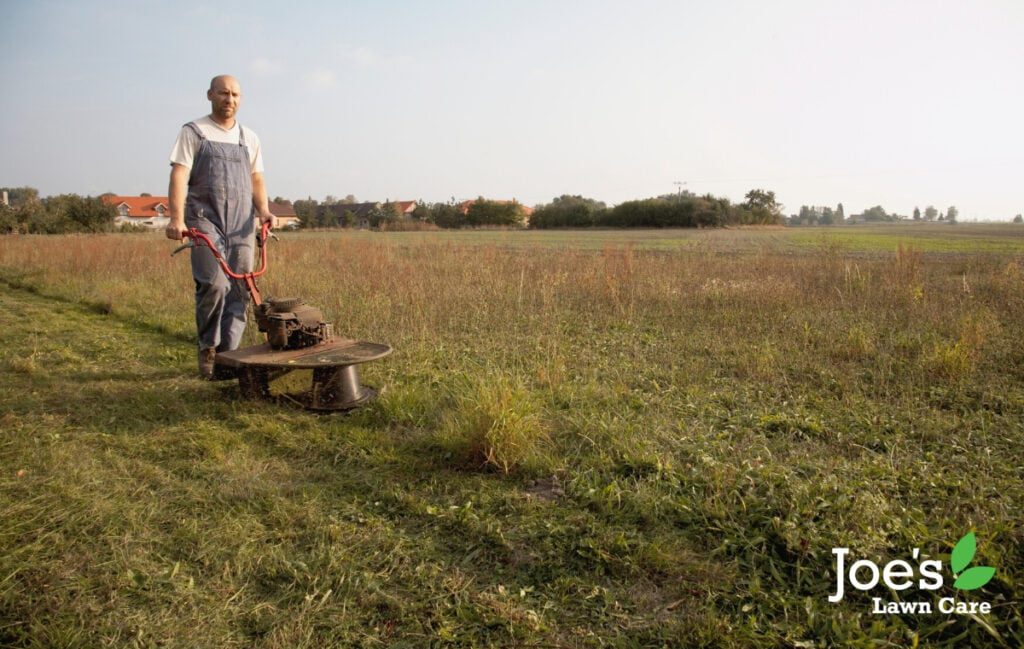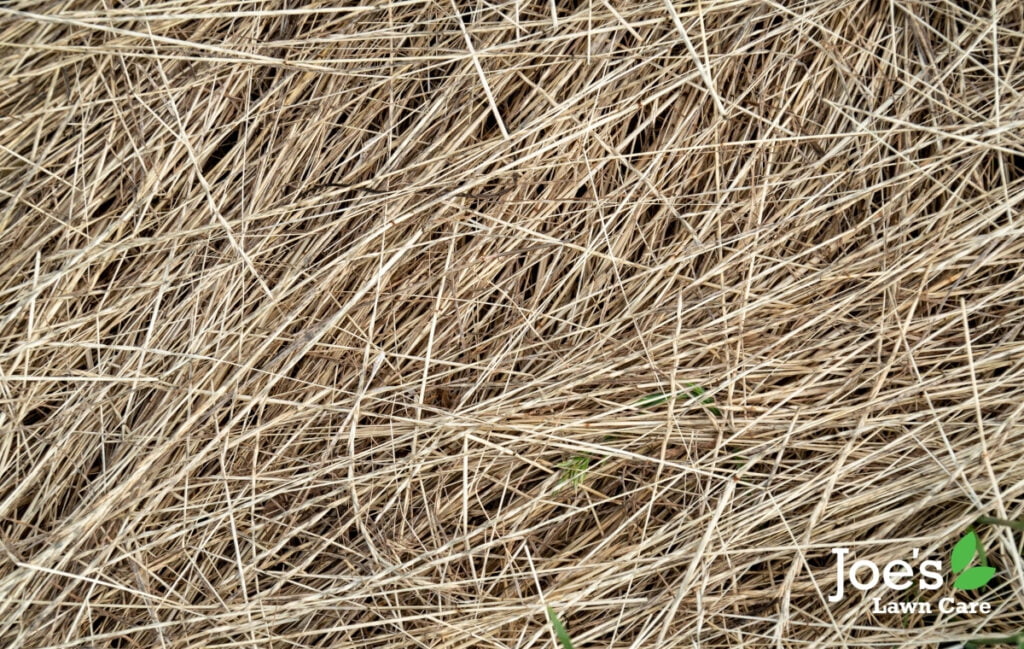How To Mow Long, Wet and Flat Grass
The outdoor season might be in full swing. But, this is England and that means heavy rains are on the forecast. Always. Sun then rain… then more sun… and even more rain. It’s great for your plants but also pretty annoying when you’re trying to keep on top of your lawn. That’s why one of the most popular questions we get asked by our clients — is how to mow long or wet grass.
So, with that in mind, here are our top tips to help you correctly mow your wet, long and flat grass:

The Golden Rule: Try To Avoid Mowing Wet Grass
There are certain things we can all agree are bad ideas. Bungee jumping without a cord. Long-distance relationships. Thinking climate change is a myth. Buying diet water. Texting your boss when you’re drunk and at the top of the list, mowing wet grass. And not just for one reason but a whole plethora of them.
From getting an uneven cut to ripping your grass blades, inviting fungal diseases to run riot. And putting yourself at risk of some pretty hardcore dangers. Mowing a wet lawn is not something we’d advise doing. That said, if you absolutely cannot wait for it to dry out (or you live in Scotland where summer lasts 6 hours). Then here are our top tips to help make it easier, safer, and healthier.

Mowing Your Wet Lawn
Here are our top tips to help you mow your wet lawn:
Make a lawn Squeegee: before you start up your mower and set off across your lawn, grab your hose pipe and drag it across your grass so that it takes most of the rain and dew with it. That way your grass will dry much quicker, giving you time to have a quick coffee before vroom-vrooming your lawn.
Sharpen your blades more often: trying to mow damp grass is not easy and will more than likely see you rip the blades rather than cutting them clean. This is bad news because ripped blades make your lawn incredibly vulnerable to diseases. To avoid this, make sure you sharpen your mower blade regularly so that it has no trouble slicing through wet grass.
Slow down while mowing: the most important to slow down, enjoy the moment not race across your wet grass is to do with [yawn] health and safety. We know this sounds boring. But slipping while pushing a machine that has a sharp rotating blade attached to the bottom could put a bit of a black mark on an otherwise wonderful day. Of course, it’s not all about personal safety, it’s also about mowing your lawn correctly. That’s why you should mow slowly and empty your grass bag more often. Both of which will reduce the load and stress placed on your blades.
Deep clean your mower afterwards: the thing with wet grass is it tends to clog up worse than a festival portaloo, making your next mowing session even more strenuous. As such, make sure you hose your mower down after you’ve used it. Then leave it in a ventilated area so that it dries quicker and can be stored away sooner.
Wait until it’s dry: yupp. We’re telling you not to bother and just wait until the weather is warm and dry, even if that means letting your grass grow longer than you’re used to. As we mentioned above, there are more downsides to mowing your wet lawn than to simply hang tight and tick off this chore once the sun is out again.
That said, mowing long grass comes with its own challenges. So to help you, here’s everything you need to know.

Mowing Your Long Grass
We’ve all been there. We’ve all come back from a holiday and found our garden looking like a forgotten meadow. The grass climbing up the windowsills and sprouting uneven tufts that remind you of that teenage phase you went through. But before you start wishing you’d given your lawn a close shave with the mower before you left, be thankful you didn’t. Because the shorter you chop your lawn the faster it will grow back.
In fact, the best thing you can do before shooting off to sun yourself in the Algarve is simply mow your lawn at your usual height. That’s it. Don’t water it, don’t feed it, just mow it like normal and leave it.
Mowing height – rule of thumb
Then, when you return with your tan, you can make some tweaks to your mowing technique. Starting with your mower deck, which should be raised up to the ⅓ rule of thumb. Translation: only ever chop off one-third of the length of your grass blades, even if that means giving your lawn a higher cut. This is to protect your lawn’s health and happiness. Then, a couple of days later, drop your mower deck down a couple of notches and mow it again, still sticking to the ⅓ rule. After this, you should be back at your normal mowing height. Boasting a lovely lush lawn with a thick sward and the ability to defend itself from any nasty weeds.
Of course, this technique isn’t just for those sunning themselves abroad. It’s for anyone that hasn’t been able to stay on top of their mowing schedule for whatever reason, such as, you know, the classic English weather. That said, there is a trick to mowing long, thick grass. It’s called a rotary mower, which will work wonders on your lawn, especially compared to a cylinder mower.

Mowing Flattened Grass
Whether your lawn has been flattened by high winds, heavy rains, or the roller set on your mower. What you’ll find is your grass has begun to grow at an angle instead of straight up, making it a bit of a nightmare to mow. As a result, your grass stems can become thick, brown and long, until they’re almost unsightly.
To deal with, the best thing you can do is rake your lawn in the opposite way that it is flattened so that it stands up, and then mow it. Now you may need to mow your lawn a few times over in as many days before you manage to mow your lawn correctly. There’s a good chance it will look a nasty shade of brown to begin with (thanks a lot, leggy stems). But your lawn will look amazing again in no time at all. Green, lush, healthy, and thick, sort of like a shag pile rug in the 70s.
Of course you’ll probably want to prevent a flat lawn from happening again. So to do this make sure you change the direction you mow. The grass will green back up and in the future make sure you change direction when you mow each time, especially if your mower has a roller attachment. It’s as simple as that.
Thanks for reading Joe’s How To Mow Long, Wet and Flat Grass blog! For more lawn care tips and tricks, follow us on Facebook and Instagram.





